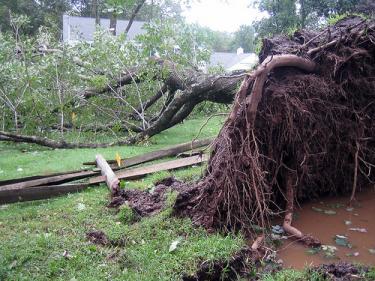What you can do when a hurricane strikes
If your property is at risk, it’s important to have a recovery plan in place so that you are prepared to take swift action after a hurricane strikes. Here are the steps to take:
Hurricane Checklist:
1) Identify and report safety issues: These may include damaged trees that may fall on access roads and power lines, blocked roads, and damaged roads, culverts and ditches.
2) Get help: Professional foresters may be available to help you assess damage to your property, determine which trees to salvage and remove trees safely. You may also qualify for financial assistance designed to aid forest landowners with tree and debris removal, wildlife preservation, as well as the repair of roads, culverts and ditches. Contact the forestry division of your state’s department of natural resources for advice. Your state may also offer tax credits for storm-related losses.
3) Assess the damage: If possible, walk your property, taking the necessary precautions to stay safe. Look for trees that are fallen, bent, twisted or broken, as well as broken limbs, and damage to roads, culverts, bridges and ditches. Take photographs and roughly map the damage on a sheet of paper. This documentation will help guide your recovery effort and may also be important for insurance purposes.
4) Salvaging downed and broken trees: If there is significant amount of damage to log-sized trees (12 inches in diameter or more), plan a salvage harvest with the help of a professional forester. This will help you recover some of the economic value of the forest and protect it from further damage from rot, pests, disease, and wildfire. Bark beetle infestations are a particular concern. Insects tend to be dormant in the winter but become active again in early spring, so susceptible trees should be removed before this time.
What to harvest
In general, trees that have been wounded, broken or blown down should be harvested, but it can be difficult to assess whether a tree is likely to recover or die as a result of storm damage. For example, some trees readily shed their leaves in high winds, appearing more affected than they really are. Your forest management goals will also influence what to harvest and how quickly. For example, you may wish to protect species of concern or sensitive ecosystems, such as riparian buffers, by retaining some storm damaged trees and debris. Consult a professional forester to determine which trees should be immediately salvaged and which ones should be monitored.
Salvage tips
Keep these tips in mind when you plan a salvage harvest:
- Salvage trees promptly.
- Salvage pines first, followed by broadleafs.
- Minimize damage to remaining trees during removal.
- Look for twisted and wounded trees in addition to broken or downed trees.
5) Remove debris: The accumulation of debris (generally 3 inches in diameter or less) dramatically raises the risk of wildfire, so debris removal is just as important as salvaging whole trees and branches.
How can I get more tips?
It’s simple! Enter your email below.

